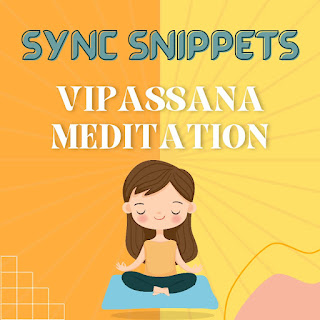Hey reader! Welcome back. In today’s blog, I did like to share an experience that is very dear to me and the one which taught me a lot about the aspects of our lives. A few months ago, I came across a book called ‘THINK LIKE A MONK’ by ‘JAY SHETTY’. This book had been really helpful because it promotes mindful meditation and many such learnings as it is inspired by the author's monk life.
Just a little background about the author of the book Jay Shetty is a former monk, a storyteller, a social media influencer, and host of the podcast ‘On Purpose’ the #1 Health and Wellness podcast in the world. Jay has created over 400 viral videos with over 5 billion views, he is also known for providing a framework with a combination of ancient wisdom and the practicalities of living in a modern world.
Luckily I came across this book on a book stall and decided to purchase it. The art to compel all the wisdom on a few pieces of paper is something incredible. Yet the most important thing about this book would be that it is written in such a way that it is easy to understand for each one of us. ‘Think like a monk’ is a book which makes me say that this is one of the best buys I have ever made. There are several reasons why I would want y’all to read this book as well. It provides a magical distillation of a monk's life and lessons learned with the help of such practical concepts suitable for everyone.
Even if you aren’t a hardcore reader like I was earlier, this book would be a great start. It will highly impact your thoughts and will make you more aware of your conscious and subconscious minds. I loved every chunk of it most importantly while I was reading; it always kept me kind of excited to explore what the other chapters have in them and what could be learned further. The book not only contained lessons but also beautiful examples by the author. There are many noteworthy examples described in the book but one of them that I remember at the moment while writing this blog is the one about Kailash Satyarthi. There are several times in our lives when we feel that we have done or accomplished a lot in life or I don’t have to do anything further, there is so much I have already done or contributed or I’m just so done. Whenever you feel the same always remember this example that Jay Shetty gives in the eighth chapter called ‘EGO’ and one of the sub-topic in this chapter is Real Greatness. Jay Shetty writes – “Kailash Satyarthi is a children’s rights activist who is dedicated to saving kids from exploitation. His NGOs have rescued tens of thousands of children, but when asked what his first reaction was to winning the 2014 Nobel Prize, he responded, “The first reaction? Well, I wondered if I had done enough to get this award.” Satyarthi is humbled by the knowledge of how much more there is to do. The most powerful, admirable, captivating quality in any human is seen when they’ve achieved great things, but still, embrace humility and their significance.” This was one of the several beautiful illustrations given by the author.
There are many exercises which we are supposed to try and practice which are mentioned in the book. The author also inspires us to practice mindfulness and visualization, which is not only good for our physical health but also enhances the capability of our mental health and many such benefits. The amount of knowledge provided in this book is such an inspiration and I am truly grateful that I got an opportunity to read this masterpiece. This blog was to inspire everyone out there to read such books and ignite our powerful approaches, and our beliefs, and create a healthy, happy place altogether. Also, don’t forget to take action not only reading but also turning our learnings into an action plan is essential. It is really difficult to summarize all the learnings in a short blog I tried my best to give a minute insight about the book. This is all for today I hope you got some meaningful understanding from today’s blog. Thank you for your precious time. See you in the next blog.
By Pratiksha ( Team SYNC Snippets)

.jpeg)
.jpeg)

.jpeg)








.jpeg)
.jpeg)
